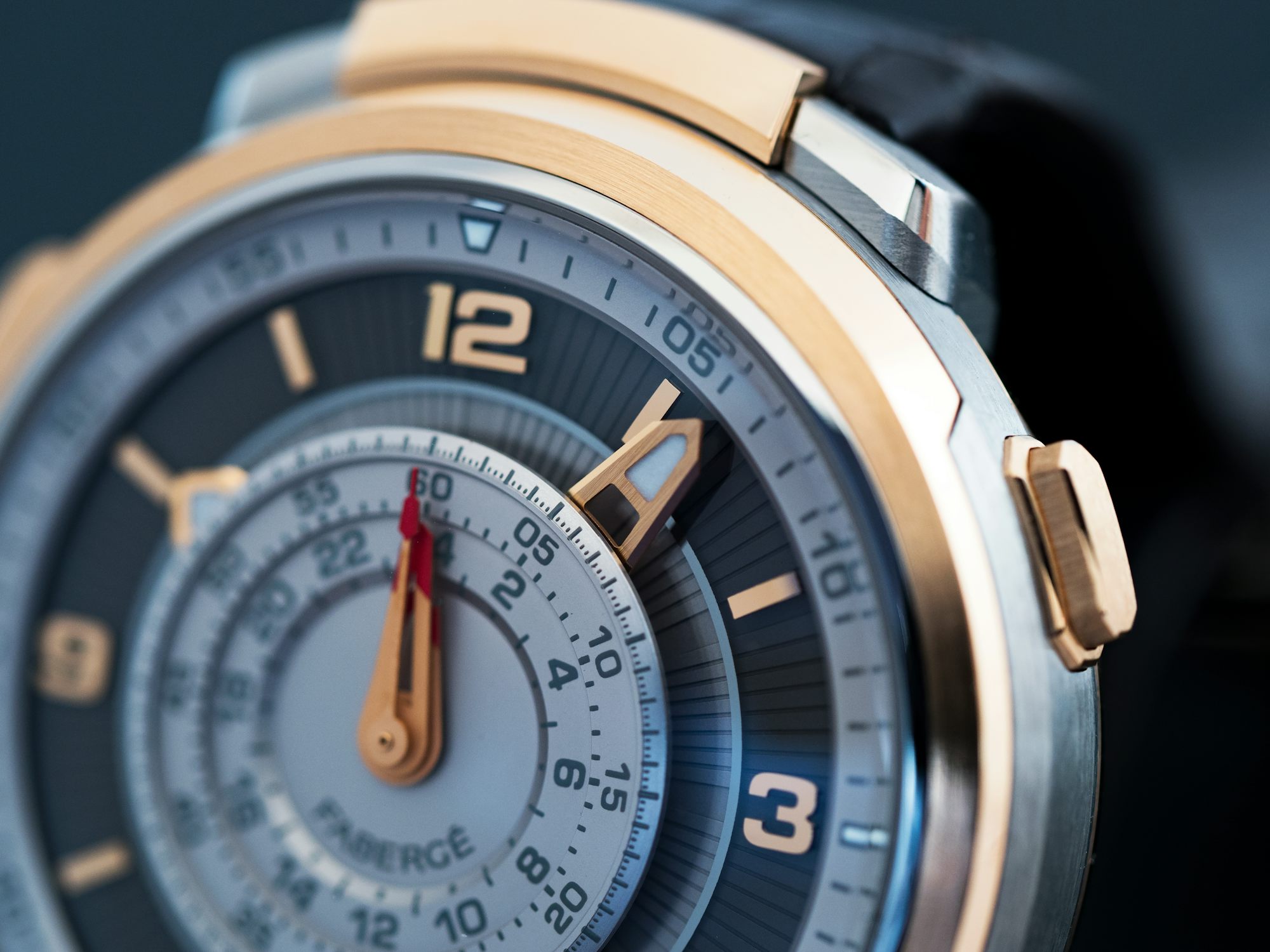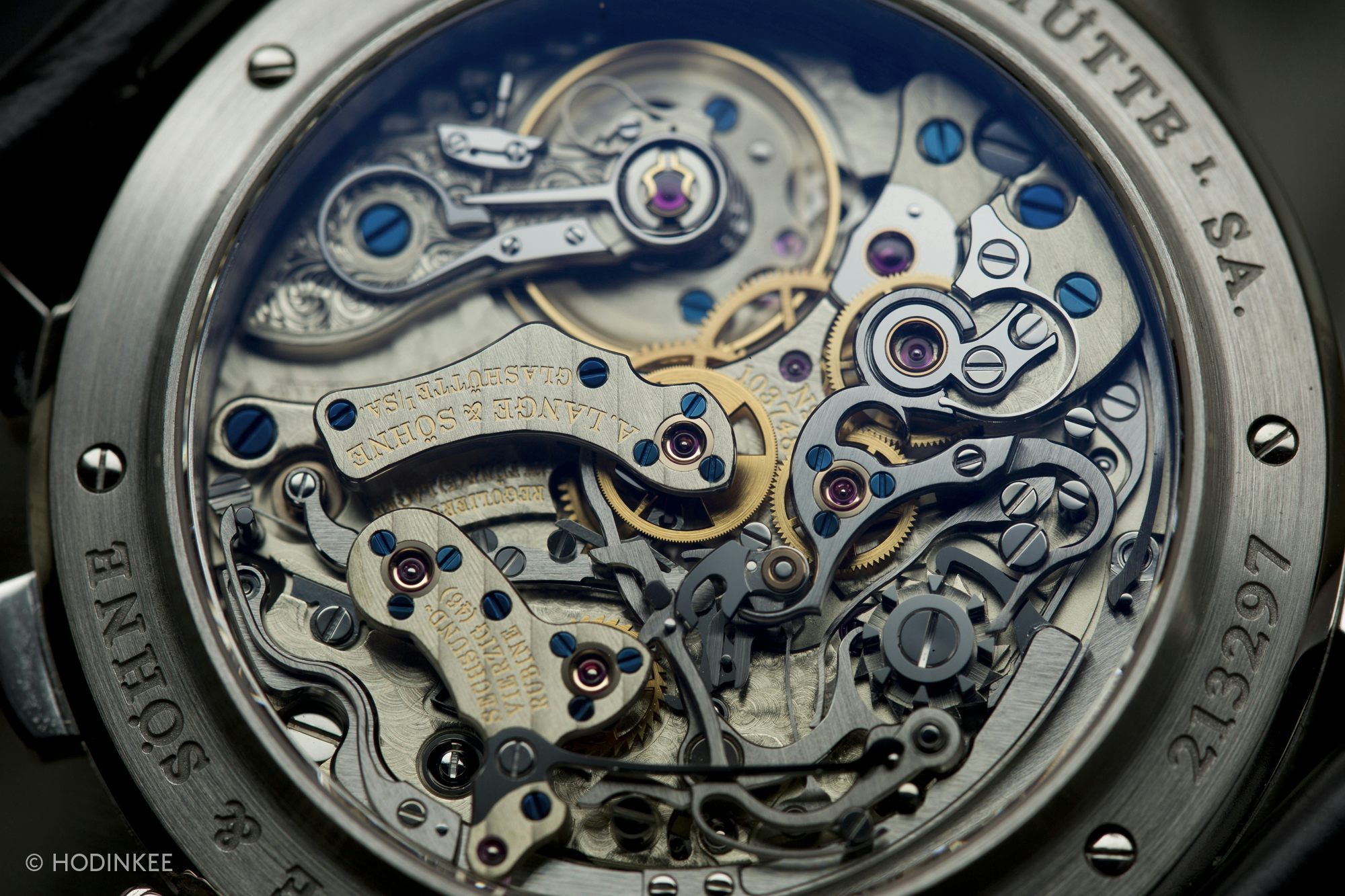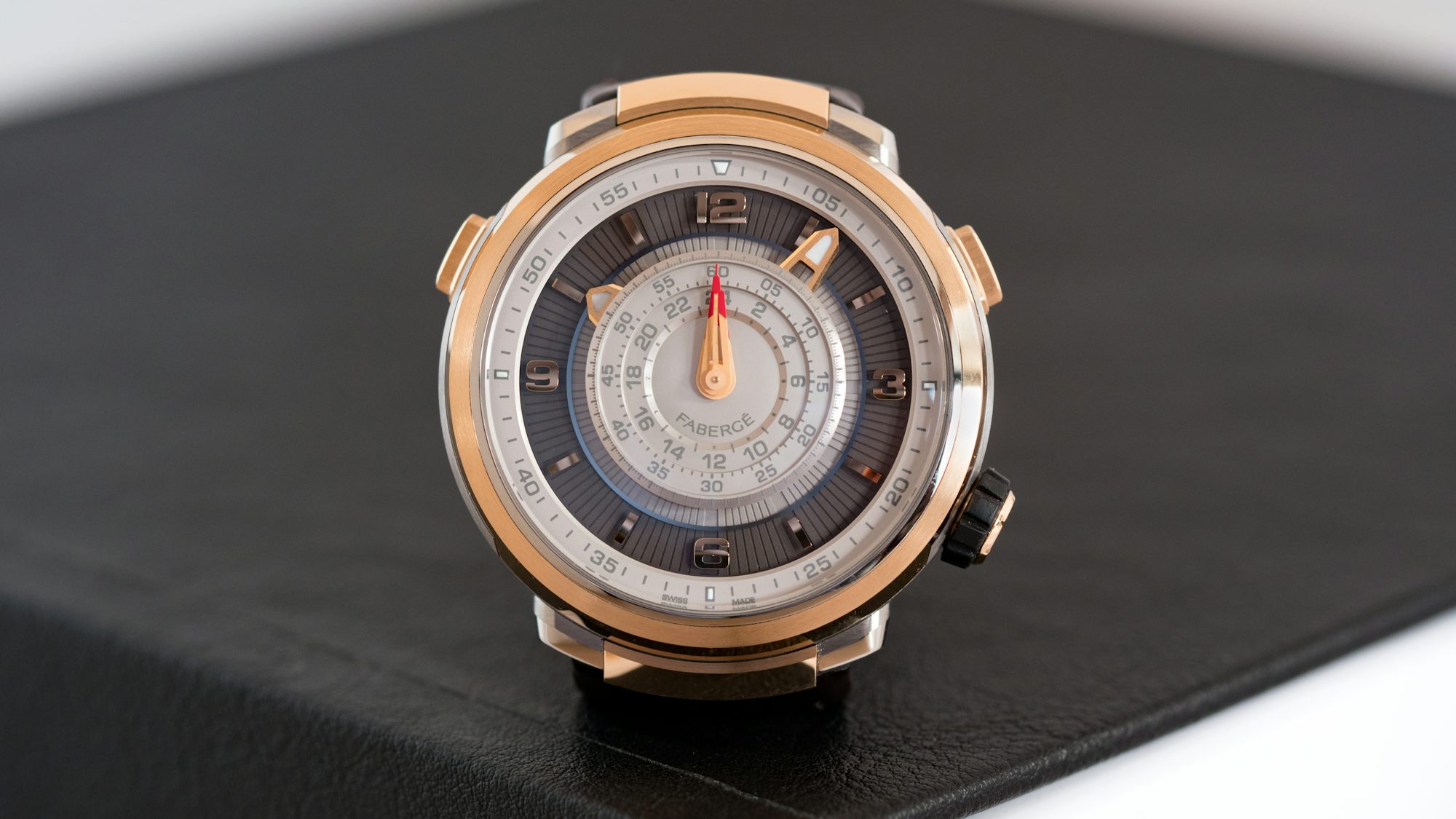Hands-On: The Fabergé Visionnaire Chronograph
By Jack Forster
One of the most surprising things we saw at Baselworld this year was from Fabergé, which is a name not historically associated with fine watchmaking. The House of Fabergé’s most famous for the Imperial Easter Eggs – elaborately crafted and spectacularly luxurious objets d’art made for the Romanov family during the last decades of Imperial Russia. Today, however, the company has been revitalized (it’s now owned by Gemfields, a mining company which purchased Fabergé in 2013) and it’s back in the jewelry business – as well as in the fine watchmaking business – in a big way.

The Fabergé Visionnaire Chronograph is one of the most technically unusual chronographs in the world.
The surprising thing we saw was the Fabergé Visionnaire Chronograph. What’s surprising about it is not that Fabergé is producing a chronograph per se, but more that it’s producing this particular chronograph. The Visionnaire Chronograph, as we reported earlier this year, was designed by Jean-Marc Wiederrecht, and manufactured at Agenhor, his complications specialist workshop. The AgenGraphe caliber AGH-6361 is not just a custom chronograph caliber, but also one that incorporates a plethora of technical innovations, and whose architecture allows the unusual central chronograph configuration of the Visionnaire Chronograph.
I pride myself on being able to recognize the major components of a chronograph, but the AgenGraphe caliber AGH-6361 is the first chronograph movement I’ve looked at in many, many years, where my first reaction was, “I have no idea what’s going on here.” I don’t feel terribly guilty about it, though; the architecture of the movement, as well as how it works, are dramatically different (to the extent that anything in the fundamentally incremental art of watchmaking is dramatic) from any other chronograph.
We covered some of the movement’s unusual design features in our introductory coverage, and now we’re going to go into a bit more detail. Most chronograph movements have the chronograph works built on top of a standard watch going train. The traditional method is to put a driving wheel on the same axis as the fourth wheel of the going train, which turns once a minute and is thus a natural power source for an elapsed-time train (which is basically what a chronograph gear train is).

A classic lateral clutch chronograph system, as used in the Lange & Söhne Datograph.
The …read more







